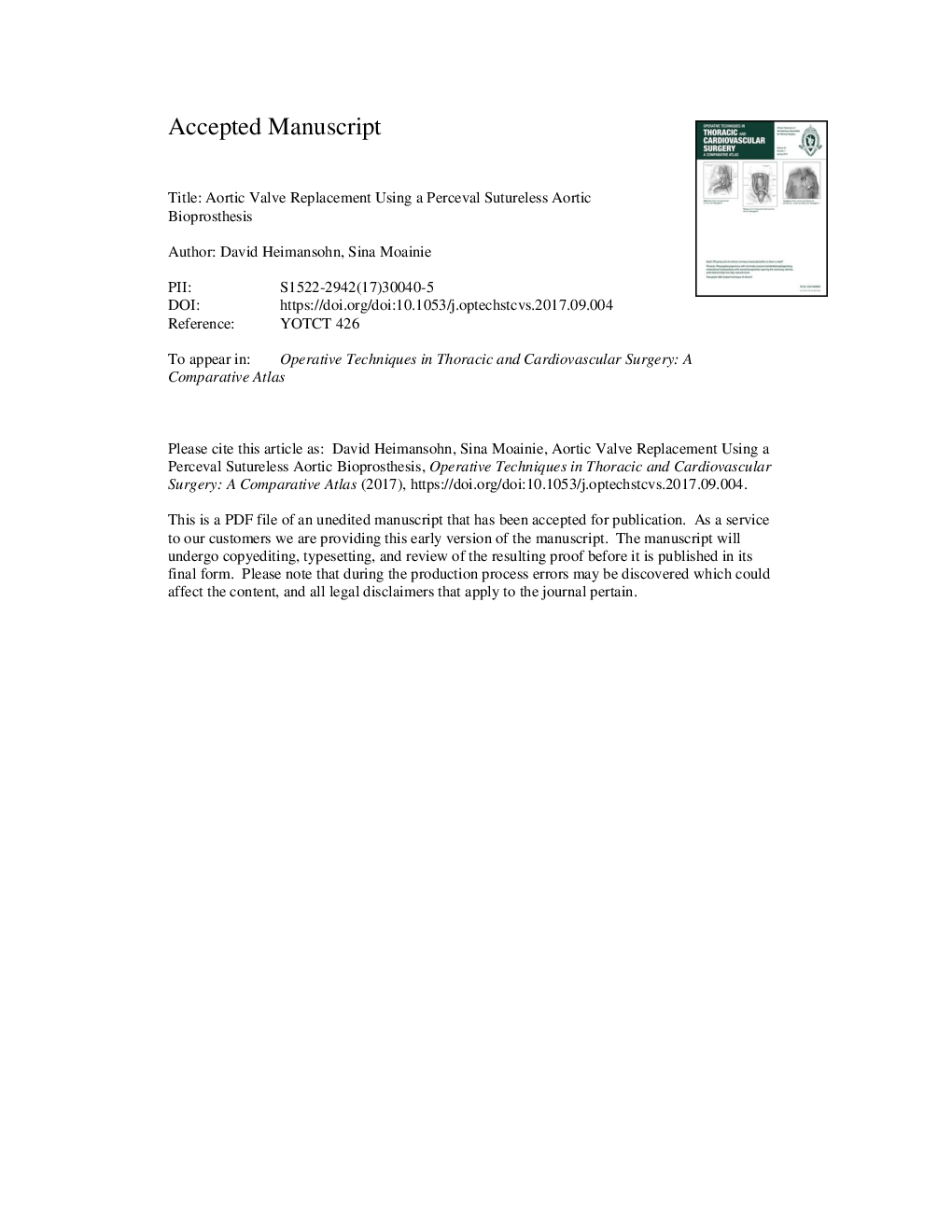| Article ID | Journal | Published Year | Pages | File Type |
|---|---|---|---|---|
| 8674838 | Operative Techniques in Thoracic and Cardiovascular Surgery | 2016 | 7 Pages |
Abstract
Surgical aortic valve replacement (AVR) has undergone many changes in the last decade, with the most significant factor for change being the success of transcatheter AVR therapy. Surgical changes include minimally invasive surgical techniques that have been developed, which contribute to an easier recovery and less morbidity. Also these smaller incisions are more acceptable to the patient population than standard median sternotomy. Surgical aortic bioprostheses have provided durable, safe, and proven outcomes for many years for surgical AVR. Innovation of these bioprostheses has produced a new type of valve that allows rapid deployment, thus shortening the operative time for implantation. In addition, these bioprostheses simplify a minimally invasive approach. The Perceval surgical valve is a rapid-deployment valve that is sutureless, with leaflets of bovine pericardium housed in a nitinol frame. The expanding nitinol frame allows for secure placement in the debrided aortic annulus, and implantation is streamlined with the help of guiding sutures that can be removed once the valve is seated. Implantation is achieved without the need for permanent suture placement, saving significant cross-clamp time. The incidence of aortic insufficiency is similar to the low rate achieved with standard surgical AVR, supporting good surgical outcomes. The Perceval valve is a major factor that can contribute to a more efficient and less invasive surgical approach to AVR that promotes better outcomes as well as an easier recovery to surgical patients undergoing AVR.
Related Topics
Health Sciences
Medicine and Dentistry
Cardiology and Cardiovascular Medicine
Authors
David MD, Sina MD,
